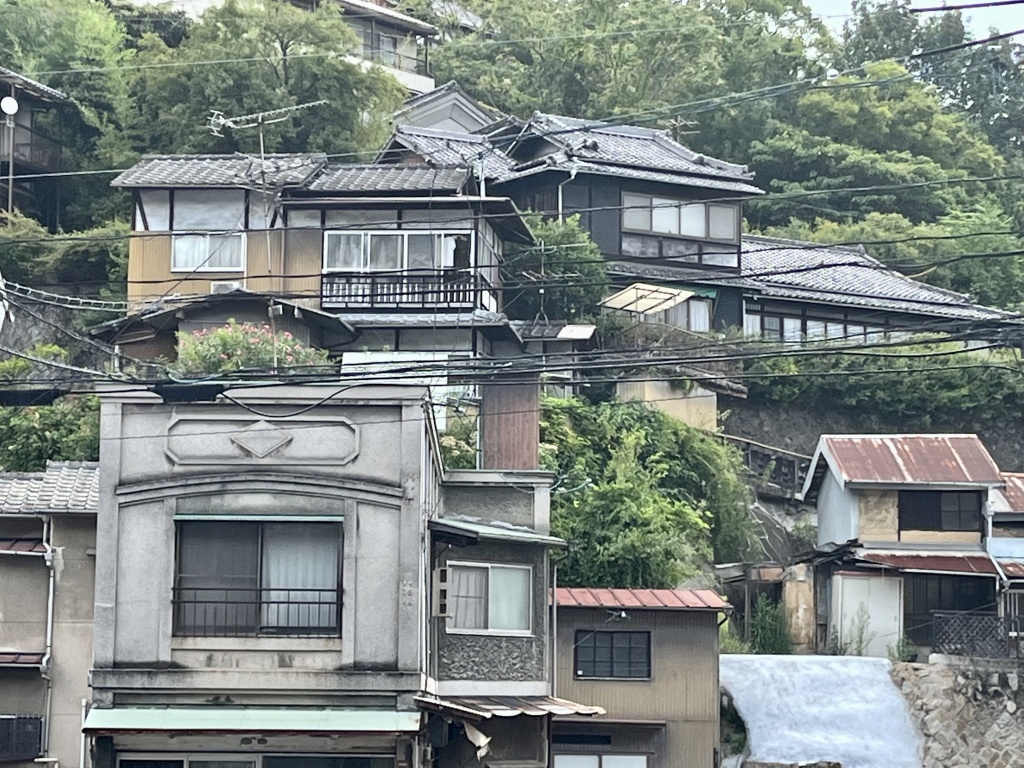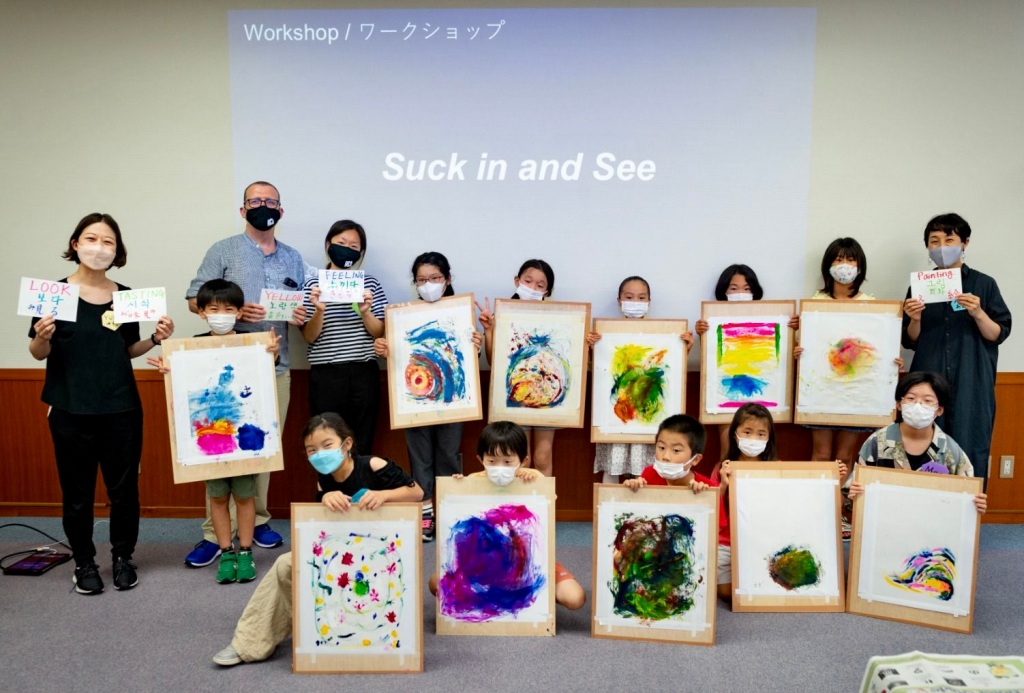

In July and August, I was in Japan participating in the first phase of the research and residency project – Re- & De-. The project partners are Onomichi City University, Japan and the Royal College of Art, UK. The research will take place in Japan, London and online via digital platforms over the next academic year. My fellow practitioners and researchers are RCA colleagues Dr Kyung Hwa Shon and Professor Tamaki Ono, and Associate Professor Yukata Inagawa from Onomichi City University. The project is supported by the Great Britain Sasakawa Foundation and the Royal College of Art.


Re- & De- is an interdisciplinary hybrid research project and model, building links nationally and internationally with artists and communities. The Re- & De- project initiates a discourse around the etymological perception of perceived opposing prefixes. The prefixes re- and de- are often seen as opposing or opposites. In addition, they convey a sense of negative or positive, for example, reconstruction and deconstruction. The project Re- & De- is to question the placement and agency of both prefixes in the context of global notions of decentralised pedagogy and practice considering the post-pandemic future and its ramifications in person and online. Instead of emphasising the opposing or dualistic dimensions of each prefix, the project focuses on the dialectical process of construction, deconstruction and reconstruction to rethink/recreate pedagogy and educational methods in art and design education and re-imagine art and design practice through decentralisation.
The discussions exploring the idea of decentralisation have been developed through reflecting and examining decentralised co-learning platforms in the post-pandemic era and the uniqueness of a local creative community in Onomichi decentralised from Japanese Tokoyo-centric mainstream art ecology. The collaborative project will set up a network of artistic practitioners, organisations and institutions between Japan and the UK as collaborators and establish new research-based practice arts and humanities methodologies together. Through a series of workshops and talks for students in both institutions, we expect the students to become aware of the potential of re-examining a decentralised platform. It will lead them to further collaborations as a result of sustainable relationships.
As part of the first residency phase of the Re- & De- research project in Japan, a series of workshops, lectures and artists’ talks were held for local artists and residents and students hosted at the Onomichi City University, the Nakata Museum and the former residential house of Wasaku Kobayashi in association with AIR Onomichi (artists-in-residence) programme established in 2007.
Nakata Museum Workshop – Suck it and See

My RCA colleague Dr Kyung Hwa Shon and I worked with the Nakata Museum’s educational team to deliver a drawing workshop for local school children ages 8-10. We first reintroduced our own work and practice as the schoolchildren visited Nakata’s group exhibition Painters and Collection 2021, which included work by Dr Kyung Hwa Shon and myself.



The premise of the workshop was based on notions of drawing from non-visual starting points, speaking to and introducing paradigms such as synaesthesia and historical presidents, including the work of Vladamir Kandinsky. Students used traditional Japanese paper and inks and responded to taste and texture-based sensations and experiential engagement with traditional Japanese sweets. It was exciting to see how the children fully embraced the concept, producing extraordinary and beautiful outcomes. In the second stage, they responded to UK shortbread biscuits as a form of cultural exchange and juxtaposition of textures and tastes. The workshop’s key teaching and learning focus was that the session was delivered without a professional translator, which added to the phenomenological approach. Before the event, we prepared over thirty cards of keywords in Japanese, English and Korean; these were held up at points individually or in combination. The reliance and dependence on demonstration, actions and intonation enhanced the concepts and quickly broke down language barriers.






As part of the residency, Dr Kyung Hwa Shon and I had studio provision within the art department of Onomicho City University. We engaged with the student community in various sessions and approaches throughout our stay. The first was a lecture on practice and an introduction to the RE- & DE- research project with Kyung Hwa Shon and myself, convened and supported by Yutaka Inagawa and Tamaki Ono. We delivered a presentation situating our practice and relating it to the RE- & DE- project and exchange element. The translation was supported by Associate Professor Yutaka Inagawa. There was an audience of thirty to forty BA and MA students, professors, curators and local and international artists.



The presentation acted as an introduction not just to our individual practice; it also framed Re-& De- as the first AIR (artist-in-residence) Onomichi, jointly housed between the university, sighted in the mountains outside the city and the Hono-ie residency space. Hono-ie residency space is a 1920s traditional two-story house situated uniquely on the slopes of the hills surrounding the bay of Onomichi city.
In week three of the residency, Dr Kyung Hwa Shon and I delivered a two-day action research-based workshop. We focused on and identified approaches to collaborative working, expanded painting and installation, which would help students interrogate the nature of the collective and community inherent in Re-& De-.
Onomichi City University Workshop – Exquisite Journey


The workshop on day one began with introductions and investigations into and around paradigms related to the Surrealist drawing exercise “Cadavre Exquis” – the exquisite corpse, to both incite and explore group and collaborative working and practice. We started with a quick practical introduction to the premise of the exquisite corpse or the familiar western game of picture or word-based consequences. We approached the premise through images, working with a page divided into five sections. Each person completed a section, and the drawing was passed to another participant. In turn, they drew using the last marks visible as a starting point; this grounded the concept and activity. In the next part, we approached this again, though increasing to a scale closer to the proportions of the human figure human scale, working collectively in groups of five on traditional Japanese dividing screen paper. Students were asked to respond intuitively to the previous marks, remnants of image and colour, the prefix of the five broad sectioning of the body, head, chest and shoulders, stomach and hips, thighs and knees, and finally ankles and feet.





On day two, students remained in the same groups. First, they were asked to take their 5-6 sectioned collective drawings and situate and/or curate them in the studio space. Then, in line with the previous day, use them as a starting point to continue and/or build from, though this time, a two-dimensional space into the three-dimensional reality of the studio space. Students were provided with a range of materials, paper, found wood and cardboard, string, tape and fabrics. The main focus here was the shift on practice which now included negotiated learning and practice. Students moved away from individual contributions to a whole. They engaged fully with a shared collaborative approach, looking at dialogue between authorship, ownership and cultural location taken from the original drawings.







Each of the two-day sessions was concluded through a group seminar, recorded and documented as part of the broader research archive and discourse of Re- & De- which will be included in the project’s web archive and site to be launched in 2023.
The pedagogical projects and teaching and learning aspects will now be further developed through online activities with cohorts of students from the UK and Japan, in addition to workshops and conferences situated around Professors Tamaki Ono and Yutaka Inagawa’s visit and residency in London in early 2023.